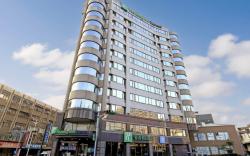New Taipei City Yingge Ceramics Museum Introduction
New Taipei City Yingge Ceramics Museum is the country's first professional ceramics museum, focusing on the development of ceramics in Taiwan over the past century. It presents the memories and history of the ancestors' lives in this land. The museum is committed to integrating various resources and establishing positive interactions with the local community, promoting cultural tourism construction that fully showcases the Yingge industry and local characteristics, while also stimulating public interest and care for ceramics. Additionally, it actively expands its horizons to promote international ceramic culture exchanges, aiming to establish the subjectivity of Taiwanese ceramic culture through continuous efforts. The overall architectural form uses exposed concrete, a steel frame, and transparent glass to penetrate the internal and external environments, creating an infinite extension of space and changes between reality and illusion, presenting a simple beauty. The beautiful architecture constructs an excellent stage for ceramic displays and establishes a stunning landmark for Yingge. Upon visiting the museum, one ascends the tiered stone steps and crosses the water bridge, experiencing the sounds and visual effects created by the large water wall and pool, leading to a calming of emotions and a transition in mood, allowing for a pure heart to enter the museum. Inside, the space is composed of a continuous and richly layered design using exposed concrete, washed stone walls, gray stone, and brown wood, within a three-story building and two underground floors, where one can leisurely enjoy the passage of time in the realm of art. The architecture of the museum itself serves as a stage with infinite possibilities, where the exhibits are not the only protagonists; the audience also plays a key role in the space. There is a "Children's Experience Room" specifically designed for children aged 4-10, and a "Ceramics Workshop" that provides amateur ceramic enthusiasts opportunities for research, creation, and exchange, allowing visitors to have a more intimate tactile experience with the earth.


































